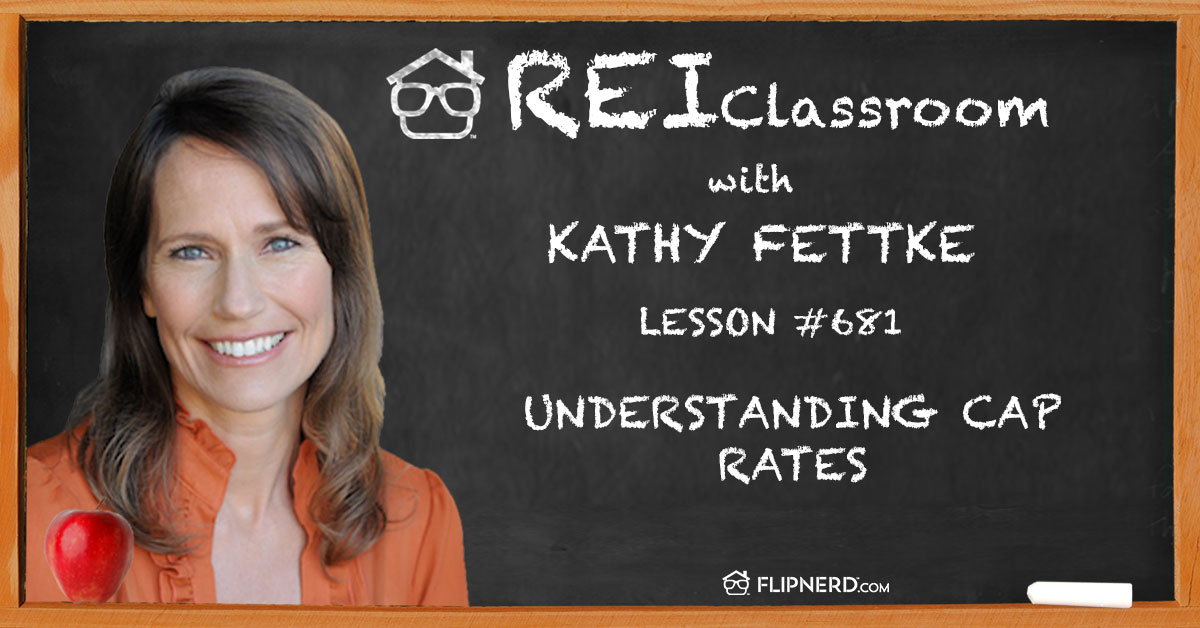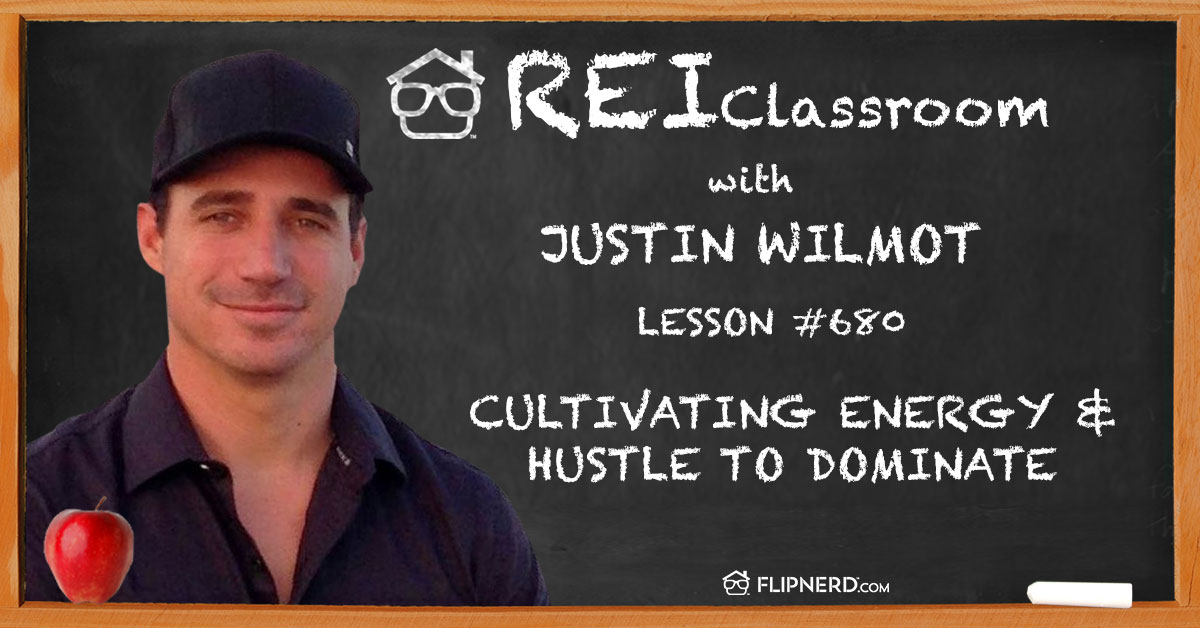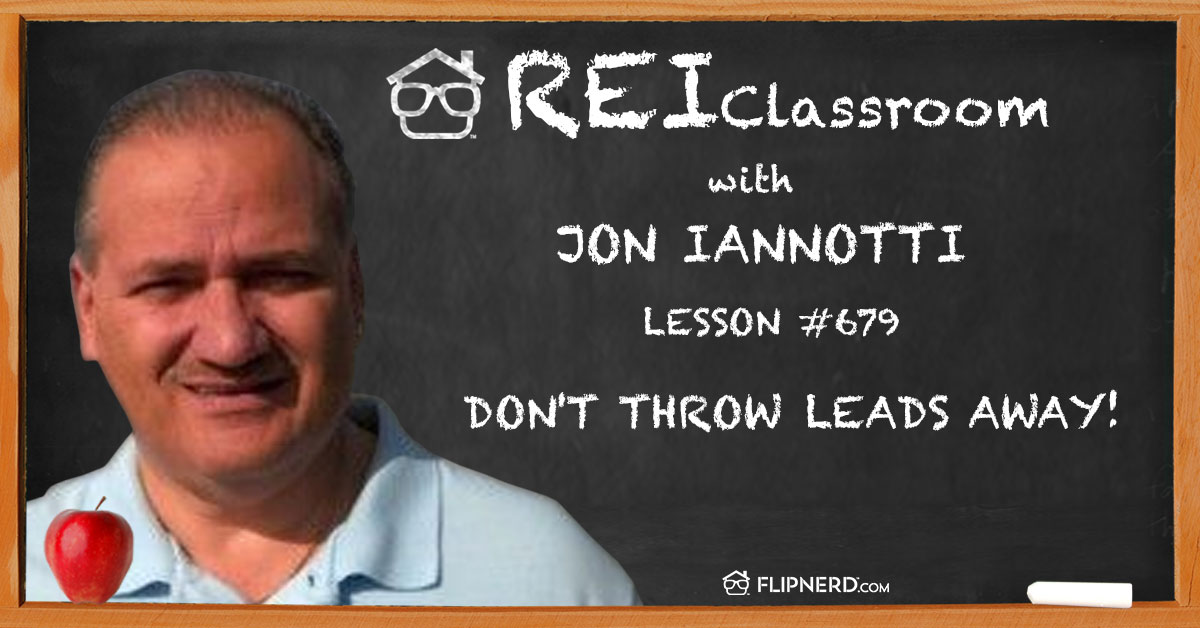Today’s REI Classroom Lesson
In the classroom today, Lex Levinrad explains what kind of neighborhood is best for purchasing a home for fix and flips. Also, learn how to find out about these homes from wholesalers.
REI Classroom Summary
By talking with other group members, you can let them know that they’ll get a referral fee by helping send the right people your way. Making it about them and less about you is critical.
Listen to this REI Classroom Lesson
Real Estate Investing Classroom Show Transcripts:
Mike: Welcome back to the FlipNerd.com REI Classroom where experts from experts from the real estate investment industry teach you quick lessons to take your business to the next level. And now, let’s meet today’s expert host.
Lex: Hi, everyone. This is Lex Levinrad, Founder of the Distressed Real Estate Institute. In today’s REI Classroom, we’re going to be talking about fixing and flipping properties.
Mike: This REI Classroom real estate lesson is sponsored by VirtualStaffNow.com
Lex: If you are new, if you have never fixed and flipped a property before, the first thing that you need to do is to determine a target market you’re going to focus on. I suggest that you use a market that’s relatively close to where you live. In fact, one that I like to do is there’s a free tool that you can use called freemaptools.com and you can actually take where you live and you can do a radius around there. Figure out a maximum driving distance of probably 30, 45 minutes so that it’s not too far away. Then, narrow it down and focus in on the cities and then towns that are within that radius that you could have as potential markets.
The type of market you’re looking for is neighborhoods where you can find a nice three-bedroom, two-bathroom or a four-bedroom, two-bathroom home. It needs to be a neighborhood that’s not predominantly a rental neighborhood. So you want to stay away from the low-income, Section 8 kind of neighborhoods. For a fix and flip, you want to be in a tier that’s slightly above that. It needs to be the kind of neighborhood where people can actually get approved for a mortgage. It should be a neighborhood where a majority of the people in that neighborhood are not renters but are homeowners. Some of the signs that you can see when you’re driving through these potential neighborhoods would be, first of all, obviously price point. The cheapest price points, generally speaking, are going to be rental neighborhoods so it’s going to be three or four steps above there.
The second thing is just general, overall look of the neighborhood and how people keep up their properties because tenants don’t typically spend a lot of money watering your lawn or landscaping or things of that nature. If there’s a lot of low-income or Section 8 housing then you might have a lot of people that don’t work and you might see a lot of people loitering around during the day, during work hours.
Whereas if you’re in a nice neighborhood where everybody wakes up and go to work in the morning, typically, what you would see during a regular work day would be FedEx and UPS people, people mowing lawns, the gardeners, that kind of thing. Now that’s number one, finding the target market. So pick something that’s close to you, close to where you live. And it needs to be the kind of neighborhood where most people can afford to buy a home or have decent enough credit to get a mortgage.
The second thing is once you’ve determined that neighborhood, how do you actually go out there and start looking for properties? I’ll get to financing in a second. The best way to do it, hands-down, I’m going to recommend is sign up for wholesalers lists. Many people are wholesalers, myself included, and whatever city or state you’re in, there are people in your town that are wholesalers. Make sure you go to your local real estate investment club meetings and find out who these people are. Sign up so that you get their emails. Every time they may send out deals, you see them.
And then, any of the deals in that list that fit your criteria for your specific target market, go take a look at those houses. Don’t make any offers, just go take a look at them and start learning. Then, learn about after-repair values and how much it’s going to cost to fix those houses. Start looking for something that looks like a deal. It’s going to take you a while to do that. A good rule of thumb, it could be as many as 100 houses, but I’d say you’re going to need to look at a bare minimum of 10 houses in order to find one that would have the decent enough potential for you to fix and flip.
Once you’ve identified a house, the next thing that you’re going to need to worry about is how you’re going to finance the house. If you’re going to be doing a fix and flip, you can avail yourself of either hard money or a private lender. If you do so, you will be paying a higher interest rate. Your goal should be to buy the house, fix it and put it on the market and resell it and pay off that loan. Typical numbers, you can make, for example, a student of mine right now purchased a house for $130,000. We got him a hard money loan for $120,000 so he put $10,000 down. He had to spend about $17,000 repairing the property of his own money. We can put the property back on the market for around $180,000. It should a $30,000 or $40,000 profit potential on that house.
Actions steps, number one, identify a target market or city that will work for you. Number two, sign up for wholesalers lists, as many as possible, and start going out and looking at these houses, figuring out what they’re worth, what they would cost to repair and how much profit margin there is. And number three, get relationships going with hard money lenders and private lenders, which you can do by going to your local real estate investment club.
Once again, thanks for this REI Classroom lesson. This is Lex Levinrad, Founder of the Distressed Real Estate Institute. To learn more about me, feel free to visit my website at www.lexlevinrad.com.
Mike: VirtualStaffNow.com is the leading virtual assistant provider for real estate investors. As busy real estate investors, there’s nothing more valuable than our time. And VirtualStaffNow.com not only helps you find the right real estate virtual assistant for your business, they train them on an ongoing basis, manage them daily to make sure they’re staying productive and effective, and in the event they’re not the right fit or need to be replaced, they handle that for you too. Whether you need one or 100 virtual assistants for your team, start the process right now at VirtualStaffNow.com.
Please note the views and opinions expressed by the individuals in the program do not necessarily reflect those of the FlipNerd.com or any of its partners, advertisers and affiliates. Please consult professionals before making any investment or tax decisions, as real estate investing can be risky.
Are you a member yet of FlipNerd.com, the hottest real estate investing social community online? If not, you can join for free in less than 30 seconds and get access to hundreds of off-market deals, vendors in your market to help you in your business and you can start networking with thousands of other investors just like you. Get your free account now at FlipNerd.com.
Please check out the FlipNerd family of real estate investing shows where we host four great ongoing shows at FlipNerd.com/shows or simply search for FlipNerd in the iTunes store.
Lex: Hi, everyone. This is Lex Levinrad, Founder of the Distressed Real Estate Institute. In today’s REI Classroom, we’re going to be talking about fixing and flipping properties.
Mike: This REI Classroom real estate lesson is sponsored by VirtualStaffNow.com
Lex: If you are new, if you have never fixed and flipped a property before, the first thing that you need to do is to determine a target market you’re going to focus on. I suggest that you use a market that’s relatively close to where you live. In fact, one that I like to do is there’s a free tool that you can use called freemaptools.com and you can actually take where you live and you can do a radius around there. Figure out a maximum driving distance of probably 30, 45 minutes so that it’s not too far away. Then, narrow it down and focus in on the cities and then towns that are within that radius that you could have as potential markets.
The type of market you’re looking for is neighborhoods where you can find a nice three-bedroom, two-bathroom or a four-bedroom, two-bathroom home. It needs to be a neighborhood that’s not predominantly a rental neighborhood. So you want to stay away from the low-income, Section 8 kind of neighborhoods. For a fix and flip, you want to be in a tier that’s slightly above that. It needs to be the kind of neighborhood where people can actually get approved for a mortgage. It should be a neighborhood where a majority of the people in that neighborhood are not renters but are homeowners. Some of the signs that you can see when you’re driving through these potential neighborhoods would be, first of all, obviously price point. The cheapest price points, generally speaking, are going to be rental neighborhoods so it’s going to be three or four steps above there.
The second thing is just general, overall look of the neighborhood and how people keep up their properties because tenants don’t typically spend a lot of money watering your lawn or landscaping or things of that nature. If there’s a lot of low-income or Section 8 housing then you might have a lot of people that don’t work and you might see a lot of people loitering around during the day, during work hours.
Whereas if you’re in a nice neighborhood where everybody wakes up and go to work in the morning, typically, what you would see during a regular work day would be FedEx and UPS people, people mowing lawns, the gardeners, that kind of thing. Now that’s number one, finding the target market. So pick something that’s close to you, close to where you live. And it needs to be the kind of neighborhood where most people can afford to buy a home or have decent enough credit to get a mortgage.
The second thing is once you’ve determined that neighborhood, how do you actually go out there and start looking for properties? I’ll get to financing in a second. The best way to do it, hands-down, I’m going to recommend is sign up for wholesalers lists. Many people are wholesalers, myself included, and whatever city or state you’re in, there are people in your town that are wholesalers. Make sure you go to your local real estate investment club meetings and find out who these people are. Sign up so that you get their emails. Every time they may send out deals, you see them.
And then, any of the deals in that list that fit your criteria for your specific target market, go take a look at those houses. Don’t make any offers, just go take a look at them and start learning. Then, learn about after-repair values and how much it’s going to cost to fix those houses. Start looking for something that looks like a deal. It’s going to take you a while to do that. A good rule of thumb, it could be as many as 100 houses, but I’d say you’re going to need to look at a bare minimum of 10 houses in order to find one that would have the decent enough potential for you to fix and flip.
Once you’ve identified a house, the next thing that you’re going to need to worry about is how you’re going to finance the house. If you’re going to be doing a fix and flip, you can avail yourself of either hard money or a private lender. If you do so, you will be paying a higher interest rate. Your goal should be to buy the house, fix it and put it on the market and resell it and pay off that loan. Typical numbers, you can make, for example, a student of mine right now purchased a house for $130,000. We got him a hard money loan for $120,000 so he put $10,000 down. He had to spend about $17,000 repairing the property of his own money. We can put the property back on the market for around $180,000. It should a $30,000 or $40,000 profit potential on that house.
Actions steps, number one, identify a target market or city that will work for you. Number two, sign up for wholesalers lists, as many as possible, and start going out and looking at these houses, figuring out what they’re worth, what they would cost to repair and how much profit margin there is. And number three, get relationships going with hard money lenders and private lenders, which you can do by going to your local real estate investment club.
Once again, thanks for this REI Classroom lesson. This is Lex Levinrad, Founder of the Distressed Real Estate Institute. To learn more about me, feel free to visit my website at www.lexlevinrad.com.
Mike: VirtualStaffNow.com is the leading virtual assistant provider for real estate investors. As busy real estate investors, there’s nothing more valuable than our time. And VirtualStaffNow.com not only helps you find the right real estate virtual assistant for your business, they train them on an ongoing basis, manage them daily to make sure they’re staying productive and effective, and in the event they’re not the right fit or need to be replaced, they handle that for you too. Whether you need one or 100 virtual assistants for your team, start the process right now at VirtualStaffNow.com.
Please note the views and opinions expressed by the individuals in the program do not necessarily reflect those of the FlipNerd.com or any of its partners, advertisers and affiliates. Please consult professionals before making any investment or tax decisions, as real estate investing can be risky.
Are you a member yet of FlipNerd.com, the hottest real estate investing social community online? If not, you can join for free in less than 30 seconds and get access to hundreds of off-market deals, vendors in your market to help you in your business and you can start networking with thousands of other investors just like you. Get your free account now at FlipNerd.com.
Please check out the FlipNerd family of real estate investing shows where we host four great ongoing shows at FlipNerd.com/shows or simply search for FlipNerd in the iTunes store.










